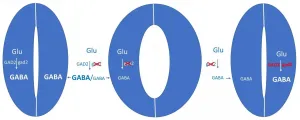Deciphering the secrets of printed electronics
We live in a world where we want our electronics to be flexible, bendable and stretchable apart from being intelligent. Printed electronics technology has emerged as the main route to enable this vision.
2021-03-29
(Press-News.org) Next-gen electronics is envisioned to be non-rigid, component-free, flexible, bendable, and easily integrable with different objects.
Direct-write printing techniques provide unique opportunity to enable this vision through use of nanomaterial so-called functional inks, that can be tailored to add desired functionalities on various flexible substrates, such as textiles or plastic.
The technology, known as Printed Electronics (PE), has been known for decades, but has recently gained considerable attention due to innovation in material inks, process technology and design revolution.
To keep the research community abreast with the latest technological advancements in the area of droplet-based PE techniques for next-gen devices, researchers from Aarhus University have now published a comprehensive review of the technology in the prestigious scientific journal Advanced Materials.
"Through this paper, we have tried to fill the existing void in literature by discussing techniques, material inks, ink properties, post processing, substrates and application to provide a complete guide. PE is an industry relevant technology and the gateway to future portable electronics, where advanced printers can print complex circuits on any material," says Assistant Professor Shweta Agarwala, an expert in PE at the Department of Electrical and Computer Engineering at Aarhus University.
PE is already being used for many different applications today. It is an attractive method to impart electrical functionality on any surface and the major advantage of PE is that it is inexpensive and readily scalable.
"PE offers a wide range of advantages over conventional lithography-based technologies. It provides much more production flexibility, it is cheaper and far simpler. More importantly, it opens up a plethora of new possibilities to print flexible electrical circuits directly onto a wide range of substrates such as plastics, papers, clothes, and quite literally any other planar and non-planar surfaces. The research area is moving forwards fast, and this publication provides an overview of how far we have progressed today," says Hamed Abdolmaleki, a PhD student and first author of the paper.
Even though PE is being used in more and more industries, and is considered very important in the electronics of the future, the technology is still in its infancy.
For Shweta Agarwala, the sustainability aspect is very important for the future perspectives of electronics and PE technology:
"PE is the way towards biodegradable electronics, and with this technology, we can address the huge societal problem that electronics already present, and which will only get more pressing in the future. The world is not only suffering from a huge amount of plastic pollution; it is also burdened by enormous pollution from electronics in all the devices we discard rapidly. In the review article, we have also discussed the emerging field of biodegradable substrates that will have huge environmental impact," she adds.
INFORMATION:
[Attachments] See images for this press release:

ELSE PRESS RELEASES FROM THIS DATE:
2021-03-29
Kanazawa, Japan - Solar cells are excellent renewable energy tools that use sunlight to drive an electrical current for power. They've been used to power homes since the 1980s, and their performance and production cost have improved dramatically since then. The most common solar cells, based on silicon, work well for a long time. They retain more than 80% of their functionality even after 25 years. However, the efficiency--i.e., how much of the incoming sunlight is converted to electrical power--of commercial-scale silicon solar cells is currently only around 20%.
Maximizing solar cells' energy conversion efficiency will improve their competitiveness compared to fossil fuels and help optimize them as a sustainable ...
2021-03-29
The B.1.1.7 and B.1.351 variants of SARS-CoV-2 were first detected in the UK and South Africa respectively, and have since spread to many other countries. Scientists from the Institut Pasteur joined forces with Orléans Regional Hospital, Tours University Hospital, Créteil Intercommunal Hospital, Strasbourg University Hospital and Georges Pompidou European Hospital to study the sensitivity of these two variants to neutralizing antibodies present in the serum samples of people who have been vaccinated or previously infected with SARS-CoV-2. They compared this sensitivity with that of the reference ...
2021-03-29
Whether for microscopy, data storage or sensor technology, many advanced technological applications that require specific functions rely on the structure of the electromagnetic field near the surfaces of materials. In nanosystems, so-called surface phonons, i.e. temporal distortions of the atomic lattice, contribute decisively to the physical and thermodynamic properties.
If surface phonons could be specifically manipulated, it would be possible to achieve better thermal conduction or heat transfer between two components with nanosurfaces. This could be used, for example, in detectors, sensors or in highly efficient passive cooling systems. In addition, surface phonons concentrate electromagnetic energy ...
2021-03-29
A paper by the Kavli Institute for the Physics and Mathematics of the Universe (Kavli IPMU) Director Ooguri Hirosi and Project Researcher Matthew Dodelson on the string theoretical effects outside the black hole photon sphere has been selected for the "Editors' Suggestion" of the journal Physical Review D. Their paper was published on March 24, 2021.
In a quantum theory of point particles, a fundamental quantity is the correlation function, which measures the probability for a particle to propagate from one point to another. The correlation function develops singularities when the two points are connected by light-like trajectories. In a flat spacetime, there is such a unique trajectory, but when spacetime is curved, there ...
2021-03-29
The recommendations are clear: physical activity is good for mental health. But it also depends on how varied it is. That's what a new study by researchers at the University of Basel shows, pointing to one of the reasons why well-being suffers during the pandemic.
A walk in the morning, a jog in the evening or even just going out to buy groceries: activity helps the psyche. Many are trying to stay active during the pandemic despite mandatory home office and limited leisure activities. Others find that they are moving significantly less than before the pandemic because previous everyday activities are off-limits due to measures taken against the spread of Covid-19.
Against this backdrop, a study led by Professor Andrew ...
2021-03-29
A new type of universal computer memory - ULTRARAM™ - has taken a step closer towards development with a successful experiment by Lancaster physicists.
Professor Manus Hayne, who is leading the research, commented: "These new results confirm the astonishing properties of ULTRARAM™, allowing us to demonstrate its potential as a fast and efficient non-volatile memory with high-endurance."
Currently, the two main types of memory, dynamic RAM (DRAM) and flash, have complementary characteristics and roles:-
DRAM is fast, so used for active (working) memory but it is volatile, meaning that information is lost when power is removed. Indeed, DRAM continually ...
2021-03-29
"I've been studying how plants regulate their water balance for over 35 years. To find a completely new and unexpected way for saving water has certainly been one of the most surprising discoveries in my life." So says Professor Rainer Hedrich, plant scientist and biophysicist from Julius-Maximilians-Universität (JMU) Würzburg in Bavaria, Germany.
Hedrich's group discovered this new strategy together with researchers from the University of Adelaide in Australia. The results have been published in the journal Nature Communications.
GABA quantity as stress memory
The publication shows: plants use the signalling molecule GABA (gamma-aminobutyric acid) to remember the dryness of a day. The drier it is, the ...
2021-03-29
Applied physicists at the University of Sydney have proposed new standards to measure moisture leaks into bionic devices such as pacemakers, cochlear hearing implants and retinal replacements.
The researchers, who received an industry partnership funding through the Australian Research Council to undertake the study, say the new moisture standards could give the wearers of bionic implants extra confidence in the operation of the life-changing devices. They also say that the improved moisture-testing regime could be used in the emerging renewable energy industry where new-generation solar cells require high standards of humidity control.
Bionic implants must be able to operate successfully in moist environments ...
2021-03-29
Scientists reported new research results today suggesting that artificial objects in orbit around the Earth are brightening night skies on our planet significantly more than previously understood.
The research, accepted for publication in Monthly Notices of the Royal Astronomical Society: Letters, finds that the number of objects orbiting Earth could elevate the overall brightness of the night sky by more than 10 percent above natural light levels across a large part of the planet. This would exceed a threshold that astronomers set over 40 years ago for considering a location "light polluted".
"Our primary motivation was to estimate the potential contribution to night sky brightness from external sources, such ...
2021-03-29
A team of scientists led by Nanyang Technological University, Singapore (NTU Singapore) has developed a diagnostic test that can detect the virus that causes COVID-19 even after it has gone through mutations.
Called the VaNGuard (Variant Nucleotide Guard) test, it makes use of a gene-editing tool known as CRISPR, which is used widely in scientific research to alter DNA sequences and modify gene function in human cells under lab conditions, and more recently, in diagnostic applications.
Since viruses have the ability to evolve over time, a diagnostic test robust against potential mutations ...
LAST 30 PRESS RELEASES:
[Press-News.org] Deciphering the secrets of printed electronics
We live in a world where we want our electronics to be flexible, bendable and stretchable apart from being intelligent. Printed electronics technology has emerged as the main route to enable this vision.





